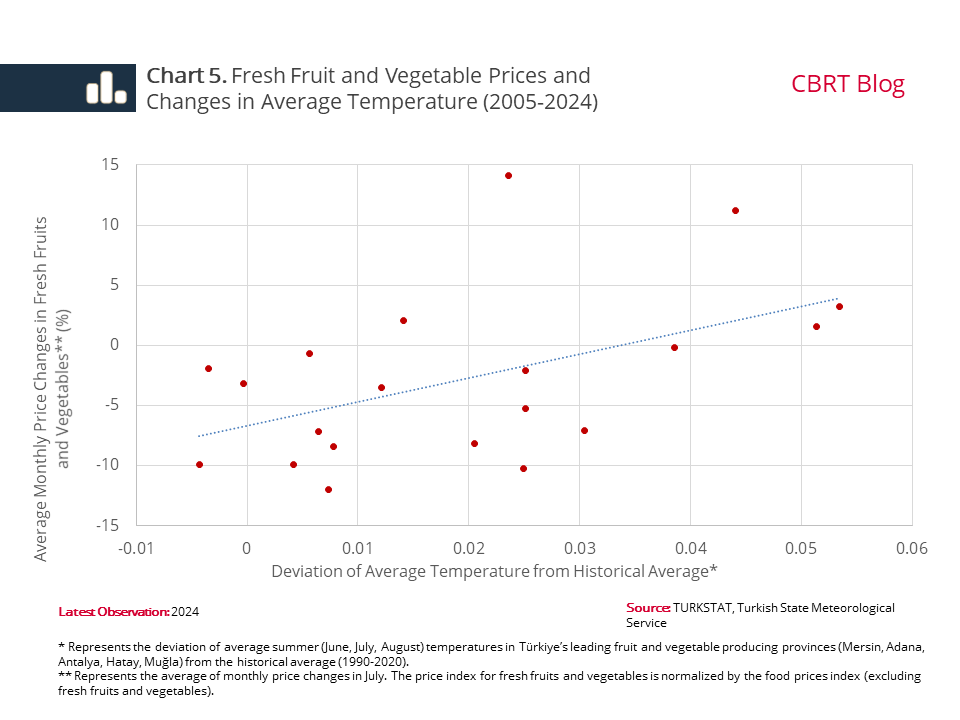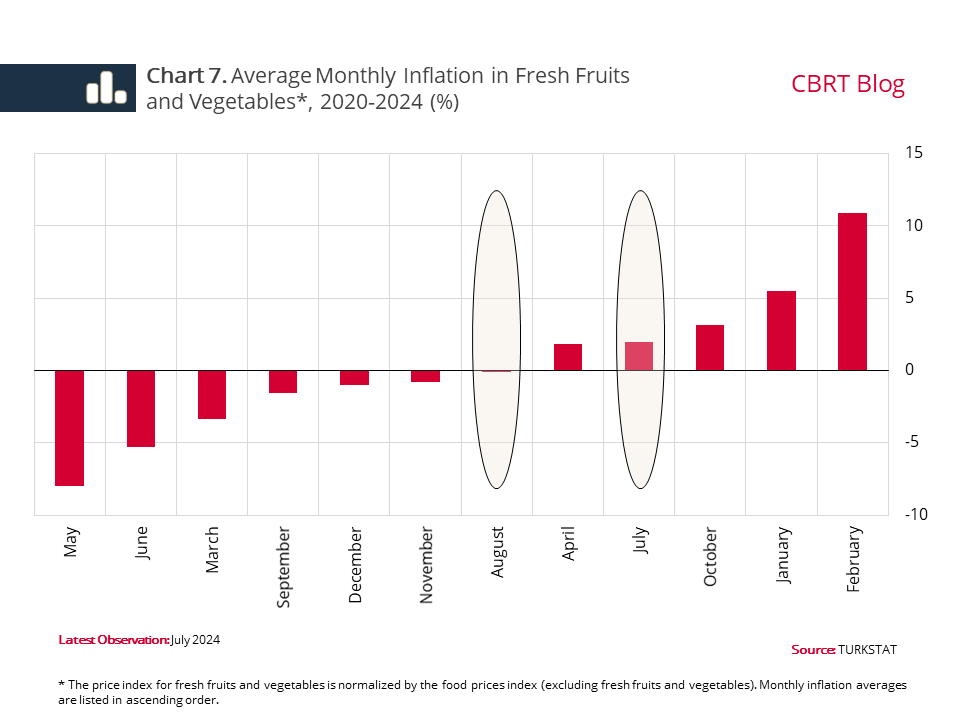Extreme climate conditions causing short-term supply shocks constitute a risk to the general price level through vulnerable food sector. Therefore, climate change occupies the research agenda of central banks, whose primary objective is maintaining price stability[1]. In this blog post, we analyze climate change and food inflation relation in Türkiye using relevant indicators.
Rising temperatures, prolonged periods of droughts, more frequent and intense extreme weather events such as severe storms and floods have emerged in recent years as an important risk factor for agricultural production, supply chains and food prices. Studies project that climate change will push global food costs up by an average of 1.5 to 1.8 percentage points each year until 2035[2]. Located in the Mediterranean, among the most vulnerable region to climate change, and being one of the world's leading producer of fruits and vegetables, Türkiye is under the risk of significant inflationary pressure through food prices driven by climate change.
Analyses indicate that the seasonal pattern of fresh fruit and vegetable prices has changed and climate change plays a major role in corresponding changes. Meteorological data show that in the post-2020 period, autumns and winters have become milder, whereas springs and summers have become much warmer (Chart 1). The amount of precipitation has been on the decline overall (Charts 2).
Rising temperature together with decreasing precipitation put upward pressure on food prices through both declining agricultural yields and increasing production costs. The amount of fruit and vegetable production in Türkiye’s five main producer provinces (Mersin, Adana, Antalya, Hatay, Muğla) reveals adverse effect of severe droughts on fruit and vegetable production (Chart 3). Hotter summers with less precipitation increase the need for irrigation and thus the amount of electricity used by farmers (Chart 4). The falling supply and rising production costs due to rising temperatures and decreasing precipitation are reflected in the prices of fresh fruits and vegetables (Chart 5).

Shifts in seasons due to climate change affect supply and costs as summarized above, which is reflected in the seasonal structure of monthly price developments in fresh fruits and vegetables (Charts 6 and 7). Prior to 2020, fresh fruit and vegetable inflation used to make a negative contribution to monthly inflation in summer months on average, while this contribution was reversed after 2020. In addition to the factors such as pandemics, supply chain disruptions and geopolitical developments, the climate change is thought to play a significant role in this recent change.

To sum up, climate change has not only become a major threat to sustainability and food security but also to price stability. The relationship between climate change and food prices is particularly critical for developing countries such as Türkiye, with respect to both household welfare and the overall inflation outlook. As summarized in this post, increased temperatures and extreme weather events due to climate change affect production, costs and prices of fresh fruits and vegetables. As a result of increasing temperatures and occurrences of droughts due to climate change, fruit and vegetable production has fallen, putting upward pressure on production costs and thus on prices. These developments emphasize the importance and necessity of addressing food prices and climate change together.
[1] Lagarde, Christine (European Central Bank (ECB) Governor). (November 7, 2022). “Painting the bigger picture: keeping climate change on the agenda”.
[2] Kotz, Maximilian, F Kuik, E Lis, C Nickel. (2024). Global warming and heat extremes to enhance inflationary pressures. Communications Earth & Environment 5.1: 116.
[3] For the definition of drought and drought periods in Türkiye, see Kurnaz (2014) (Türkiye and Drought, Istanbul Policy Center, Sabancı University-Istanbul) and the Ministry of Environment, Urbanization and Climate Change- Turkish State Meteorological Service (2023) (The State of the Türkiye’s Climate in 2022)
Sources:
Ministry of Environment, Urbanization and Climate Change- Turkish State Meteorological Service. (2023). (The State of the Türkiye’s Climate in 2022)
Kurnaz, Levent. (2014). Türkiye and Drought, Istanbul Policy Center, Sabancı University-Istanbul.
Kotz, Maximilian, F Kuik, E Lis, C Nickel. (2024). Global warming and heat extremes to enhance inflationary pressures. Communications Earth & Environment 5.1: 116.
Lagarde, C. (2022). Painting the bigger picture: keeping climate change on the agenda. ECB Blog, 7.
